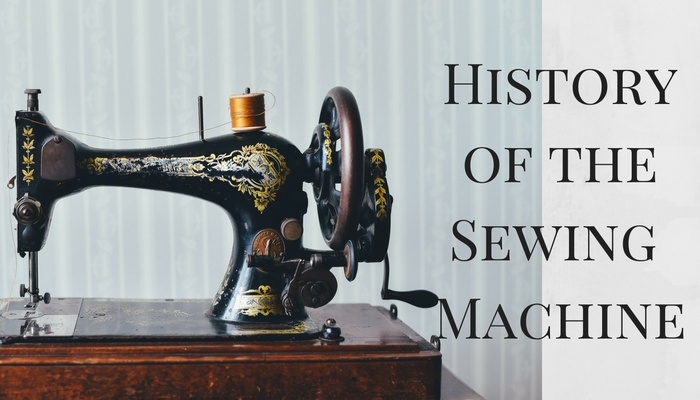The history of the sewing machine is not a straightforward one.
With its roots dating back as far as 1755, this revolutionary machine was borne out of stop-start beginnings, patent wars, and a huge factory fire.
A surprisingly sexy history for such a domestic machine.
Plenty of inventors and nations lay claim to the invention of the sewing machine — including Germany, the UK, Austria and the US — but there was so much ‘borrowing’ of ideas and development that it’s hard to pinpoint just one person as the inventor of the sewing machine.
We can track down its origins, however, and there is a clear timeline of events leading up to the development of the sewing machines that we’re so familiar with today.
Let’s take a look…
The History of the Sewing Machine
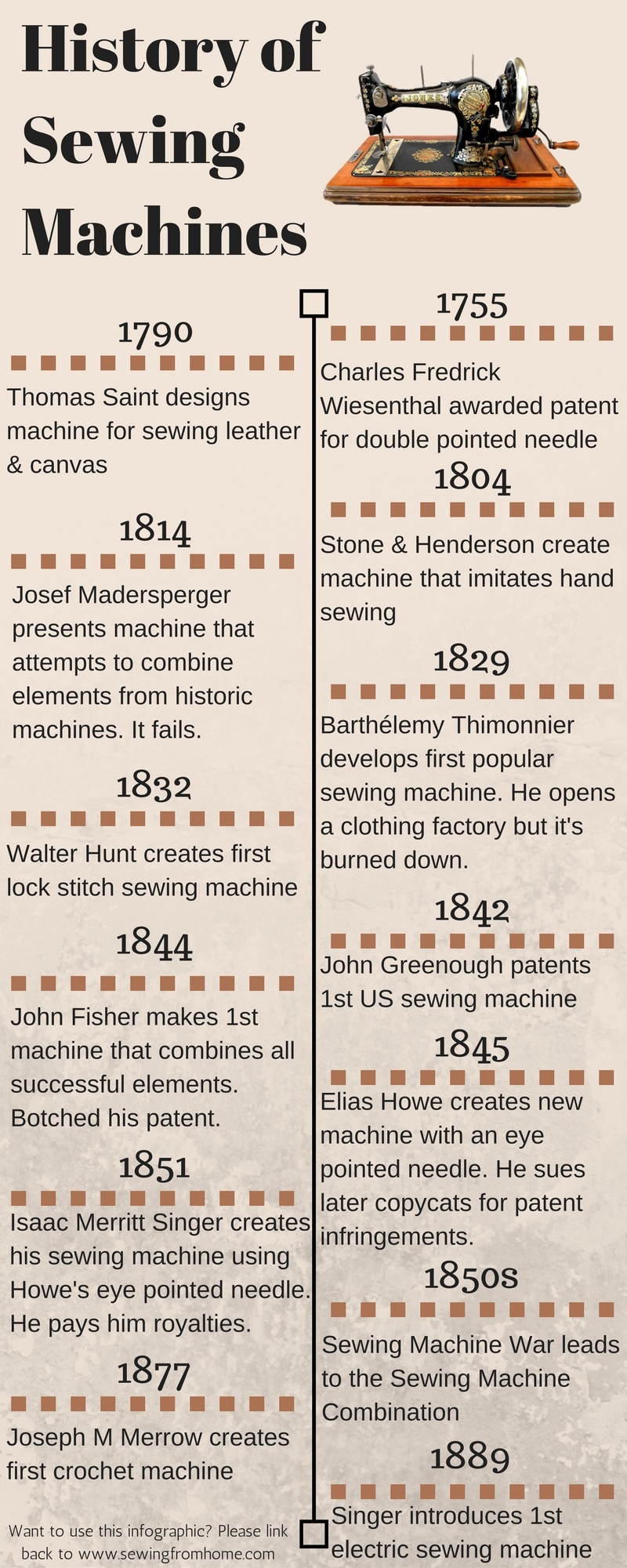
1755
A German immigrant in England by the name of Charles Fredrick Wiesenthal is working as an engineer.
He is awarded a patent for a double pointed needle with an eye at one end, with the intention that it will aid sewing. There is no mention of a machine to accompany this device.
1790
Thomas Saint designs a machine for sewing leather and canvas — primarily ship sails. The machine uses an awl to make a hole in the material, allowing the needle to pass through in a chain stitch.
It’s unknown if he ever actually built the machine alongside his designs. In 1874, William Newton Wilson found the designs and built a working machine from them, with some minor adjustments to the looper mechanism.
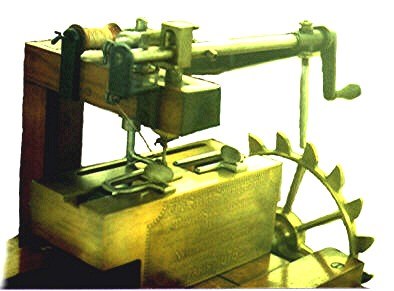
1804
Englishmen Thomas Stone and James Henderson create a machine that intends to imitate traditional sewing by hand.
The same year, in Scotland, John Duncan creates an embroidery machine that uses multiple needle.
1810
Balthasar Krems, a German, creates a sewing machine for sewing caps. He is not issued any patents and the machine is considered defective.
1814
Josef Madersperger, a Viennese tailor, presents his first sewing machine. He attempts to combine the elements of the sewing machine prototypes that went before him, but ultimately fails to deliver a practical working machine.
1829
Barthélemy Thimonnier develops the first working and popular sewing machine in France, which uses chain stitches to create straight seams. It uses a hooked needle and the machine itself is wooden.
He is issued a patent for his design in 1830 and opens a clothing manufacturing company the same year, that makes uniforms for the French army.
Unfortunately, the revolutionary aspect of the sewing machine proves to much for the locals and his factory — complete with 80 of his sewing machines — is burned down within a decade of its opening.
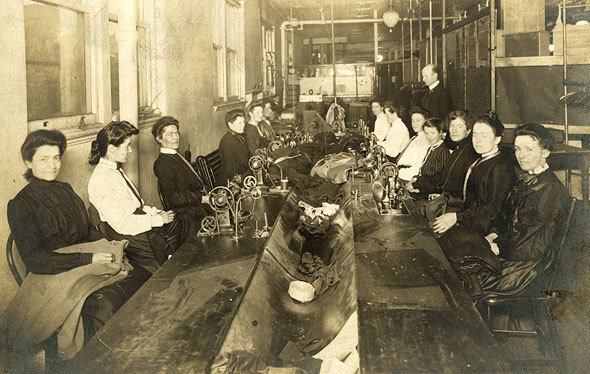
1832
American inventor Walter Hunt creates the first lock stitch sewing machine that produces short and straight seams.
It uses an eye pointed needle to carry the upper thread and a falling shuttle to carry the lower.
He grew frustrated with the project and abandoned his idea in 1838, fearing the consequences for the hand sewing economy. He didn’t patent his design until 1854.
1842
John Greenough patents the US’ first sewing machine, which sees the needle pass completely through the material.
1844
Englishman John Fisher develops the first sewing machine that combines all the successful design elements presented over the last half century. Although the machine was originally intended to sew just lace, Fisher spotted its potential as a general sewing machine.
Unfortunately, Fisher has missed out on a lot of the recognition due to him for his part in the development of the sewing machine, as he unfortunately doesn’t file his patent correctly.
1845
Elias Howe creates a sewing machine that differs from Fisher’s in that the fabric is held vertically and — most importantly — includes an eye pointed needle. It’s also hand cranked.
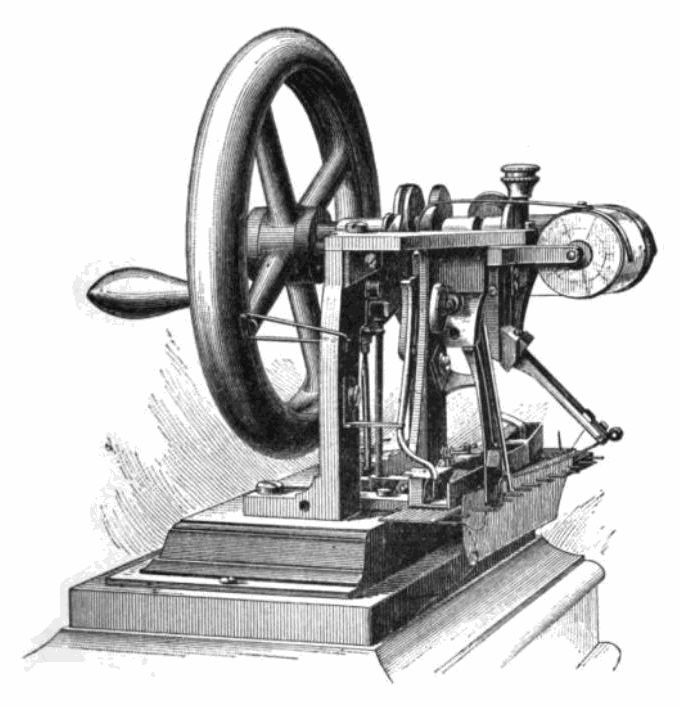
Howe took a long time to find success with his sewing machine, even moving to England to try and find a market for it. When he returned to the US to be by his dying wife’s bedside, he found that sewing machines had finally hit their stride in his homeland and that a number of manufacturers were using his patent designs to sell their wares.
He managed to successfully sue many of them, including the famous Isaac Merritt Singer, for patent infringement and future royalties.
1851
Isaac Merritt Singer creates his first sewing machine which combines Howe’s eye pointed needle (for which he would later have to pay him royalties for) with a falling shuttle and a fixed arm to hold the needle.
1850s
The sewing machine industry really began to heat up in the 50s as the Wheeler & Wilson Company created a machine that worked much quieter and smoother than their competitors, as well as inventing the four motion feed mechanism that is still in use in machines today.
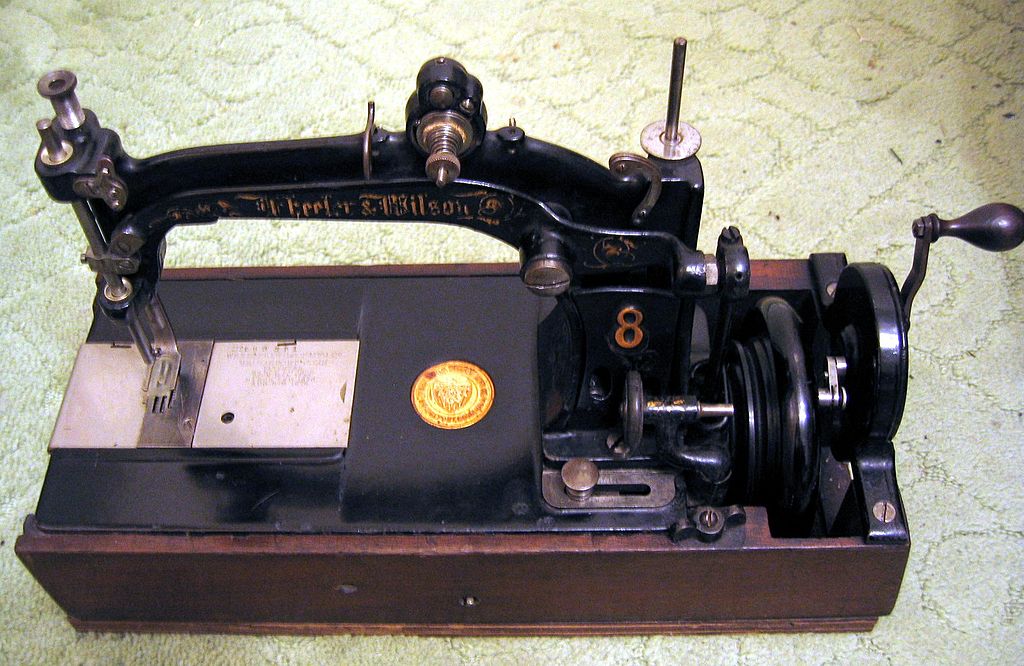
Charles Miller also created a machine to sew buttonholes during this time.
The number of patents being issued for sewing machines in the 50s reached a point where inventors were suing each other left, right and center for various infringement claims. This lead to a patent thicket commonly termed the ‘Sewing Machine War’.
1856
The Sewing Machine War came to a close when the major players decided to join together to protect their monopoly with the Sewing Machine Combination.
The group included Singer, Howe, Wilson & Wheeler and Grover & Baker.
They pooled their patents until the last one expired in 1877.
1857
Another US inventor, James Edward Allen Gibbs, patented the first chain stitch single thread sewing machine.
1860s
This was the era finally when sewing machines came into vogue. Clothing manufacturers snapped them up as they strove for efficiency and economy, while they made their way into the homes of housewives.
1877
Joseph M Merrow created the first production overlock sewing machine, commonly referred to as the first crochet machine.
1885
Singer patents the Singer Vibrating Shuttle sewing machine, which were incredibly popular before being overtaken by rotary shuttle machines in the 20th century.
The vibrating shuttle came from Allen B Wilson who developed the idea for enhanced lock stitches.
1889
Singer introduces the first electric sewing machines to the world, which would go on to become highly sought-after antique machines in the century to follow.
1918
Singer becomes the first man to be spending over $1 million a year on advertising.
At this point, he’s selling hand, treadle and electric machines.
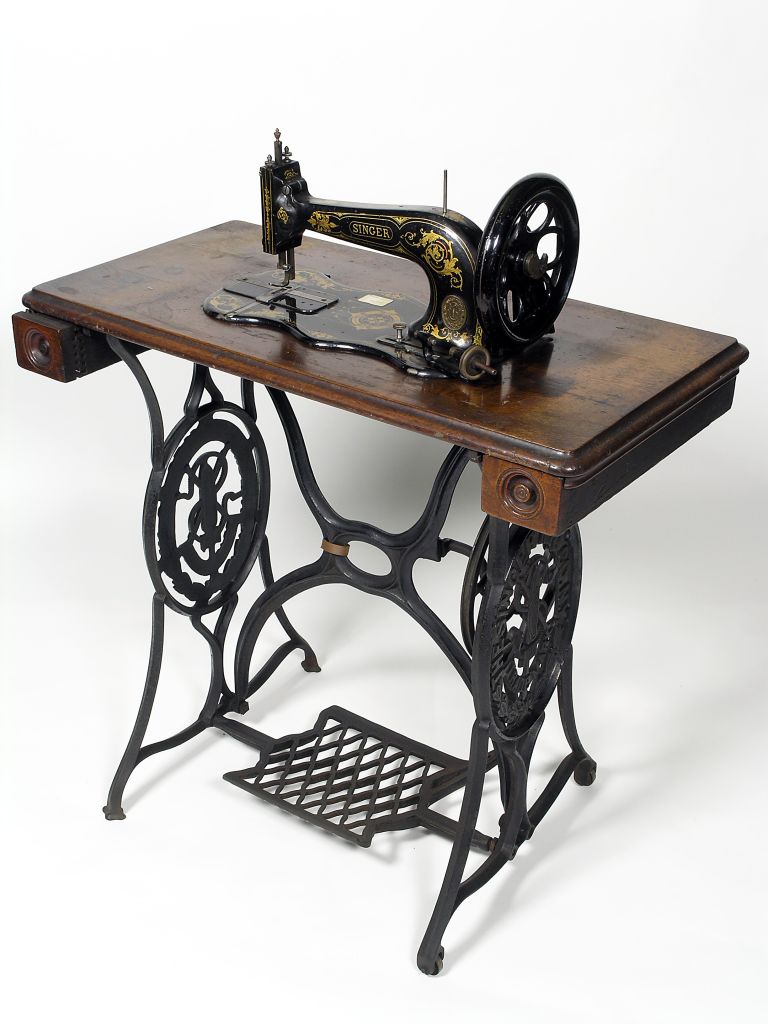
If you want to know more about the convoluted history of the sewing machine, check out this awesome video on that very topic:
And that’s the history of sewing machines!

